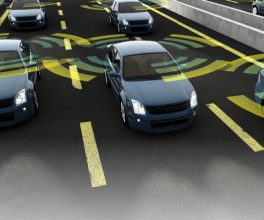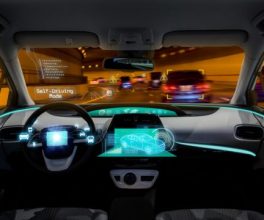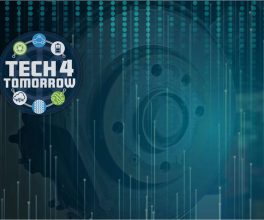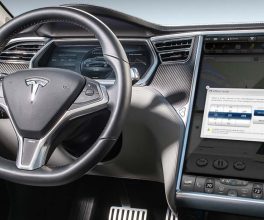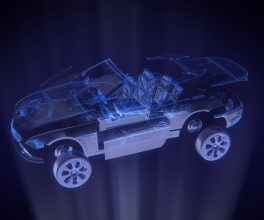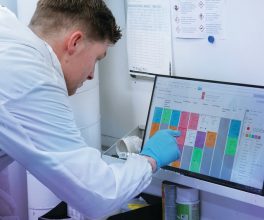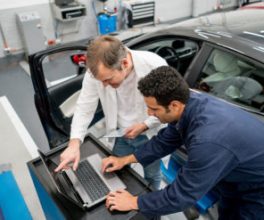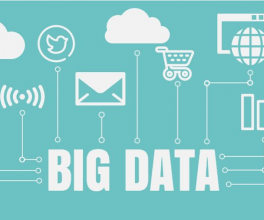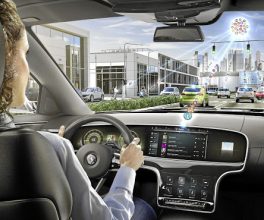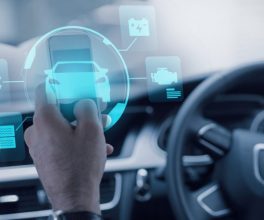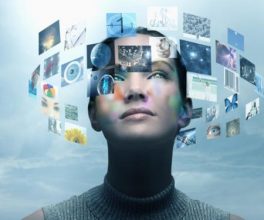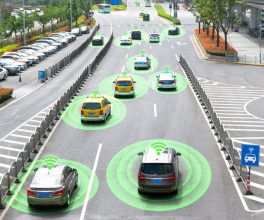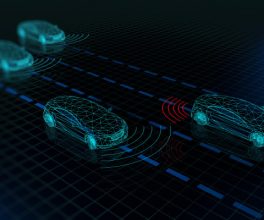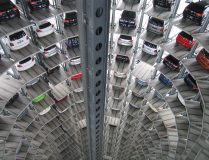The development and proliferation of driverless or assisted car is perhaps one of the biggest innovations in today’s automotive industry. With artificial intelligence (AI), an increasingly common technological platform, the automotive industry is destined to experience significant changes in the coming years in terms of solutions and supply chain management.
Internet of Things
By 2020, industry analysts estimate that over 250 million vehicles will be connected to the Internet. These vehicles will be equipped with a myriad of sensors, connectivity platforms, geo-analytical capabilities and analysis methods for Big Data. As such, the Internet of Things (IoT) principle will become a fundamental link in integrating these disparate systems into a unified operational platform. All this implies that manufacturers will have to work more closely with software developers to successfully integrate these intelligent systems into new vehicles, and ensure effective communication between them. This leads to a potential for new partnerships that can lead to exciting business opportunities with new members in different parts of the world. For consumers, the proliferation of IoT in the automotive production field represents an intelligent and integrated way to monitor the conditions of a vehicle and to evaluate when repairs or replacement of components are necessary. Data from sensors allows changes or adjustments in future production schedules. Retailers and manufacturing companies can diagnose problems and prescribe repair options by using connectivity protocols without a customer physically visiting a repair shop.
Connected Vehicles and Artificial Vision
As vehicles become more integrated and complex, manufacturing companies will need to take leaner methods of production and logistics to keep up with the needs of various industries. Artificial intelligence will be used to increase the driver’s ability to control the car under different operating conditions. However, the amount of software and hardware of artificial intelligence required will far exceed any computer system present in today’s vehicles (Figure 1).

Figure 1: Artificial Intelligence Market [Source: IHS]
Autonomy and connectivity go hand in hand with the automotive industry. Through artificial intelligence, connected cars will soon have the ability to communicate with each other and the road infrastructure. The V2X communication is mainly divided into two categories: V2V and V2I communication. The role of AI in V2X communication technology is very important, which consists of managing all back-end calculations and analyzes in order to provide accurate and timely data to drivers. The machine learning algorithms will track vehicle speed, location, destination and even preferences to provide and transmit the right information. AI will learn from the driver’s daily schedule, such as the roads travelled and stops regularly made. In autonomous driving (Figure 2) and in most of the functions of ADAS, AI provides vehicles with the so-called “artificial vision”. The ability of vehicles to identify various objects, scenes and activities in unrestricted environments is one of the key technologies in the automotive industry. The ‘vision’ of the vehicle is handled by a plethora of cameras, radar sensors and LiDAR units. However, these data are useless without a control unit. The computing power of the vehicle, composed of complex algorithms of machine learning, represents the basic element of the artificial intelligence of the vehicle itself. The machine learning algorithms are based on object detection and the recognition of sophisticated patterns. The computerized vision constantly analyzes the environment. The images are then analyzed and the nature of the objects is classified by AI. These algorithms give to the vehicle the ‘intelligence’, allowing you to learn characteristics of the object such as movement, size and shape to classify future images with greater accuracy.

Figure 2: the main building blocks of the self-driving vehicle. The goal is to perceive the environment around at 360 degrees through various sensors. This allows AI algorithms to accurately understand the entire environment and provide a robust graphical algorithm.
Intelligence Based on Cloud
Imagine a scenario in which we are passing in front of a supermarket and we receive a notification on the screen of the vehicle dashboard that warns us of some items that need to be collected from the supermarket. In this example, the vehicle is probably connected via IoT to the smartphone that contains a shopping list or even to the refrigerator that digitally tracks items in the refrigerator (missing) and any conditions (a present but expired product). This may sound like something science fiction, but cloud-based intelligence and the sharing of information and data between connected systems are rapidly becoming a reality thanks to AI. Cloud computing and cloud-based intelligence through AI have the ability to integrate many aspects of a consumer’s life through their vehicle. Big Data and advanced analytics are already coming together through artificial intelligence to help automotive manufacturing companies to produce vehicles increasingly related to driving. Automotive manufacturing companies will need a deeper understanding of their customer in order to incorporate the right software options for a truly integrated driving experience. With AI, car manufacturers will have real-time data and feedback to gain a deeper understanding of drivers.
Author – Maurizio Di Paolo Emilio
Courtesy of Analytics Insight

